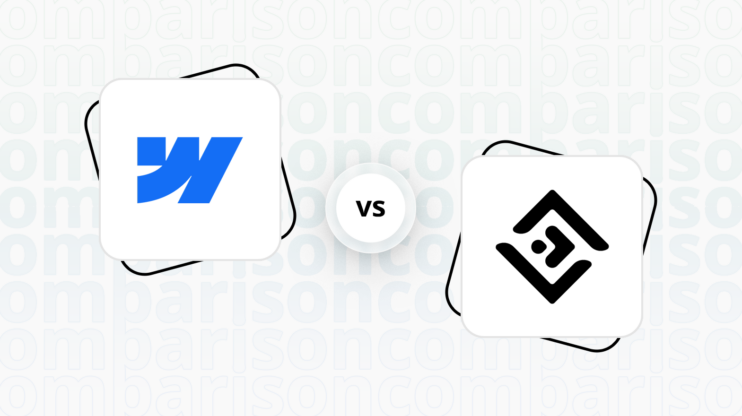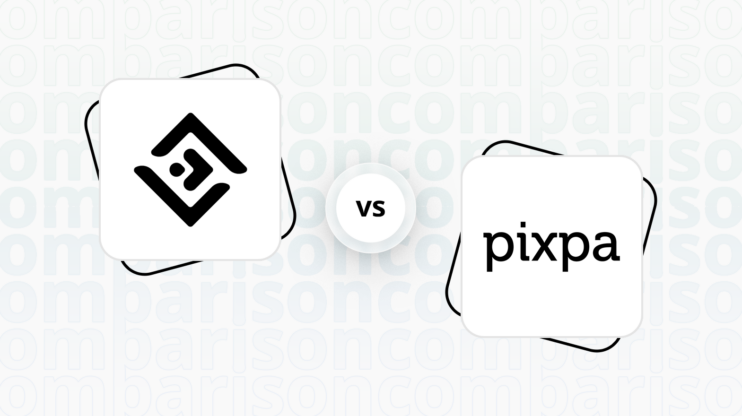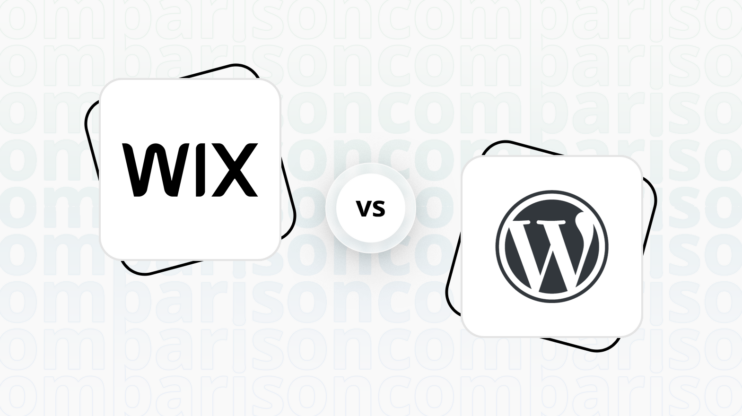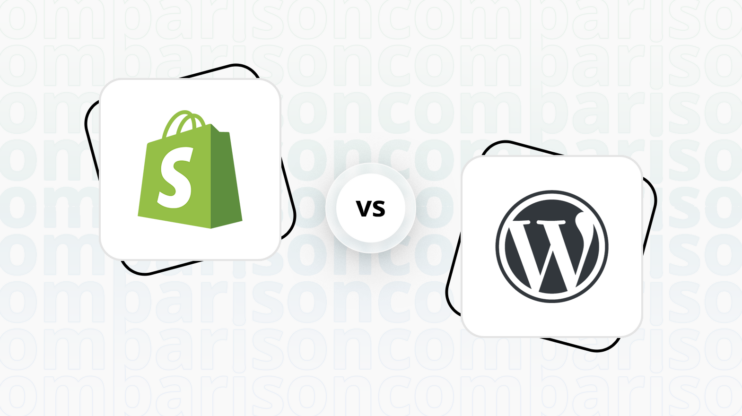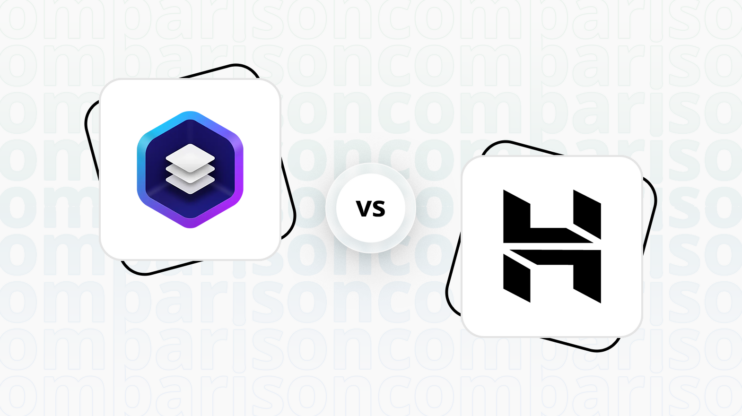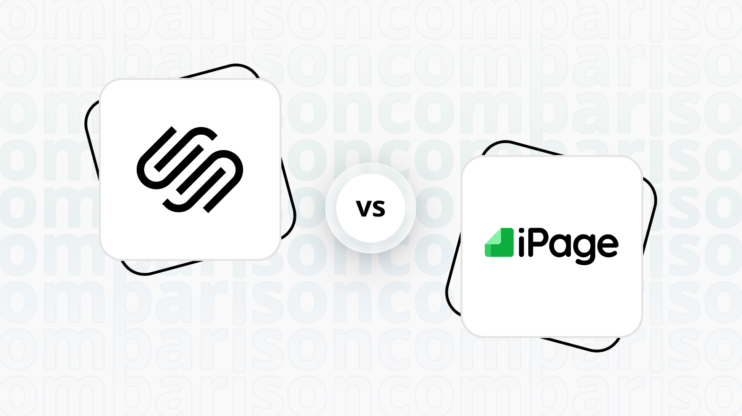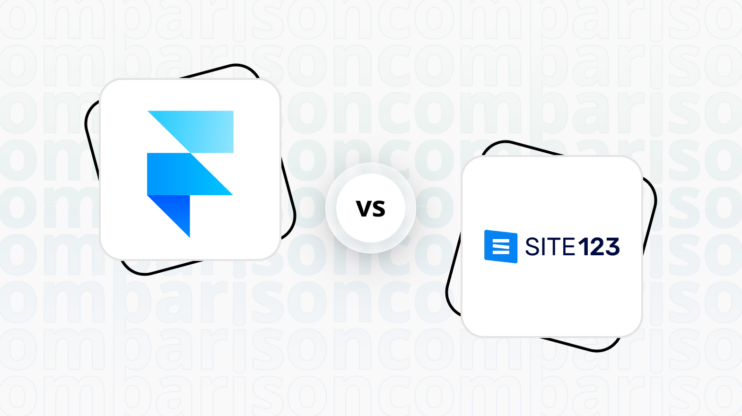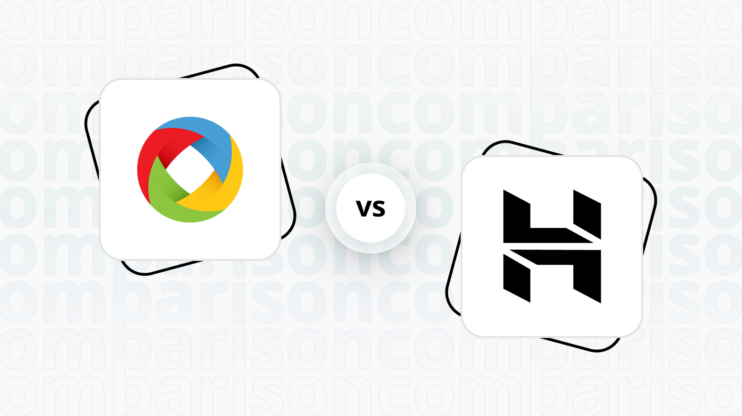Final verdict
Webflow and Pixpa cater to different audiences with their unique strengths, making the choice between them dependent on the user’s specific needs.
-
Webflow (Overall Grade: 7.9/10)
excels in providing a robust platform for professional designers and businesses looking for extensive design flexibility, powerful ecommerce tools, and high-quality hosting. Its comprehensive learning resources, superior website speed optimization, and advanced user management features make it ideal for users seeking a high degree of customization and control over their website’s design and functionality. -
Pixpa (Overall Grade: 6.7/10)
, on the other hand, shines with its user-friendly interface, making it a great choice for creatives and small businesses. It offers an intuitive drag-and-drop editor, affordable pricing, and excellent customer support. While it may not match Webflow’s advanced features and scalability, Pixpa’s ease of use and focus on simplicity make it a compelling option for users prioritizing ease of setup and management over complex customization.

|

|
|
|---|---|---|
|
Design functionalities & templates |
8.6 |
7.8 |
|
Ease of use |
7.5 |
8.4 |
|
Ecommerce |
8.5 |
7.0 |
|
Website Editors |
9.0 |
7.5 |
|
Product testing options |
6.3 |
8.5 |
|
Price |
8.0 |
9.1 |
|
Hosting quality |
8.9 |
5.4 |
|
Website speed optimization |
8.1 |
3.0 |
|
Plugins and integrations |
5.5 |
6.7 |
|
Marketing features |
7.8 |
7.4 |
|
Customer support |
8.3 |
7.0 |
|
Security |
7.8 |
8.3 |
|
AI capabilities |
8.3 |
0.0 |
|
User Management |
8.3 |
7.3 |
| Overall |
7.9 |
6.7 |
Best for ecommerce
 8.5
8.5
 7.0
7.0
Verdict
: For businesses seeking advanced ecommerce capabilities and extensive customization, Webflow is the superior choice. Pixpa, while offering simplicity and ease of use, may not fully meet the needs of larger or more complex ecommerce operations.
-
Webflow
: With its powerful design tools and flexible CMS, Webflow stands out for businesses aiming for a custom, responsive online store. It offers a wide range of ecommerce features, including advanced inventory management and integration with major payment gateways. -
Pixpa
: Best suited for creatives and small businesses, Pixpa provides an easy-to-use platform with essential ecommerce features. It’s a great starting point for those new to online selling but might lack the scalability required for growing businesses.
Best for informational & business websites
 8.6
8.6
 7.9
7.9
Verdict
: Webflow edges out Pixpa for informational and business websites, thanks to its superior design capabilities and comprehensive platform, although Pixpa remains a strong contender for those prioritizing ease of use and customization.
-
Webflow
: With a score of 8.6, Webflow stands out for its powerful design tools and flexible CMS, catering to professional designers and businesses looking for a comprehensive solution to build custom, responsive websites. Its platform is designed to offer a high degree of customization and control, making it ideal for creating detailed, information-rich business websites. -
Pixpa
: Scoring 7.9, Pixpa is an excellent choice for creatives and small businesses seeking an easy-to-use platform for building professional websites. It offers highly customizable templates and a drag-and-drop interface, simplifying the website creation process for users without coding knowledge. Pixpa’s focus on SEO, marketing, and analytics tools also supports businesses in growing their online presence effectively.
Detailed comparison
Design functionalities & templates
Design FunctionalitiesRepresents how well each platform allows for creative design and customization of websites.Score Components:
- Template Variety (30%): Range and quality of design templates.
- Customization (30%): Flexibility and options for design alterations.
- User Interface (20%): Ease and intuitiveness of the design process.
- Responsiveness (10%): Adaptability to different devices and screen sizes.
- Innovation (10%): Unique design features and tools.
 8.6
8.6
 7.8
7.8
Winner: Webflow.
With a higher score in design functionalities and templates, Webflow offers a more robust design experience with a diverse range of template and customization options.
Webflow delivers a robust design experience with a diverse range of template and customization options. Boasting over 1000 pre-built templates covering various industries and website types, including free and premium options, Webflow ensures a constantly evolving library for users.
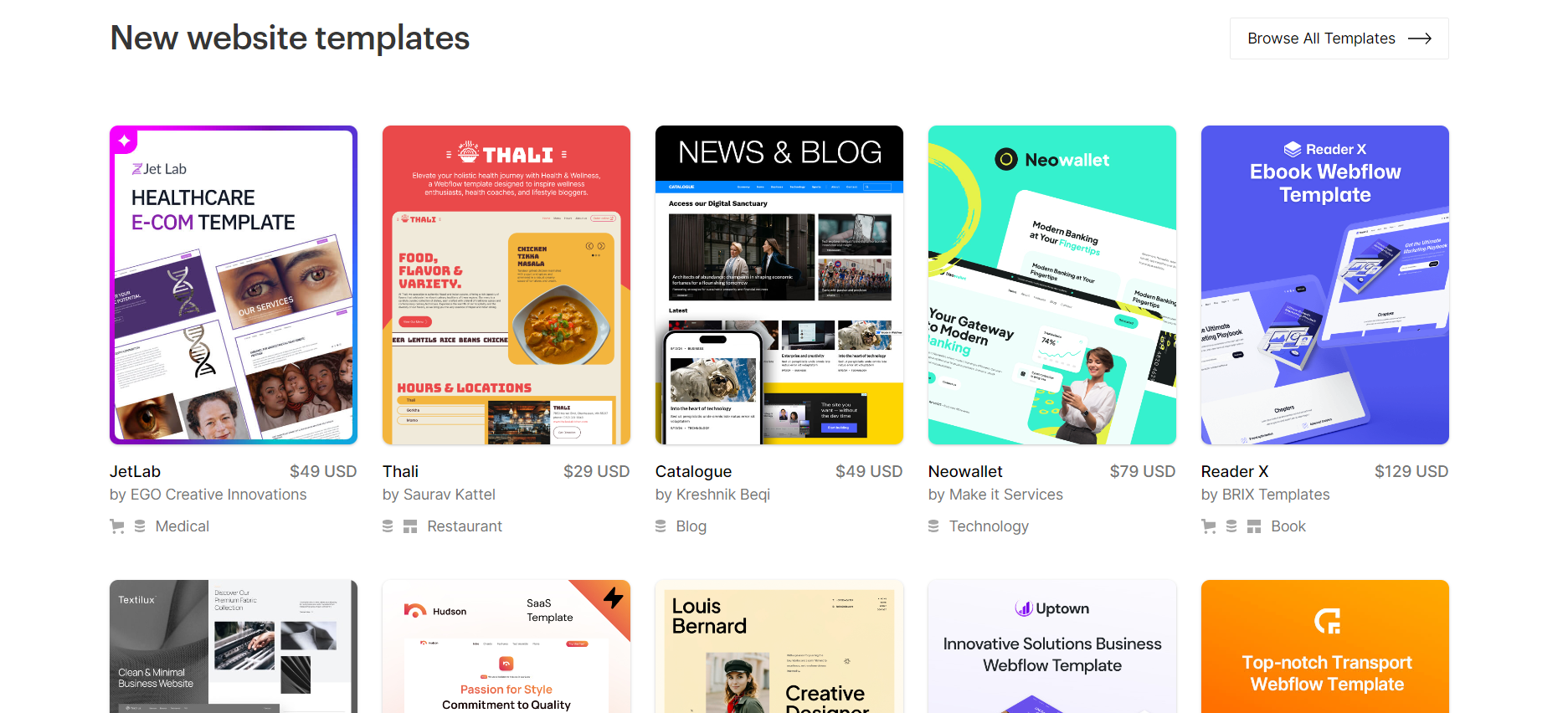
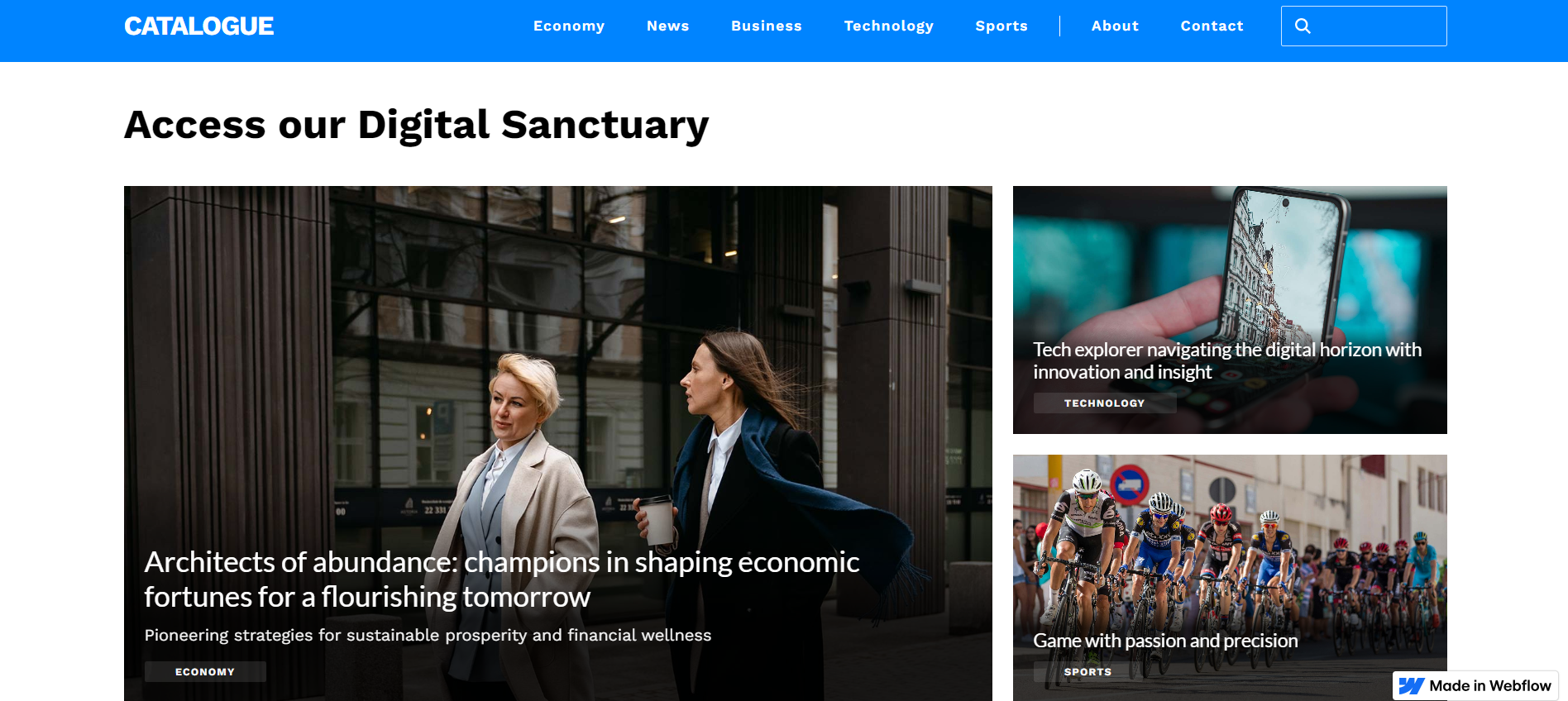
On the other hand, Pixpa offers a wide variety of templates and designs tailored to meet the diverse needs of creative professionals. With an extensive library that includes numerous options, users can easily find the perfect template that aligns with their brand identity and showcases their work in the best light.
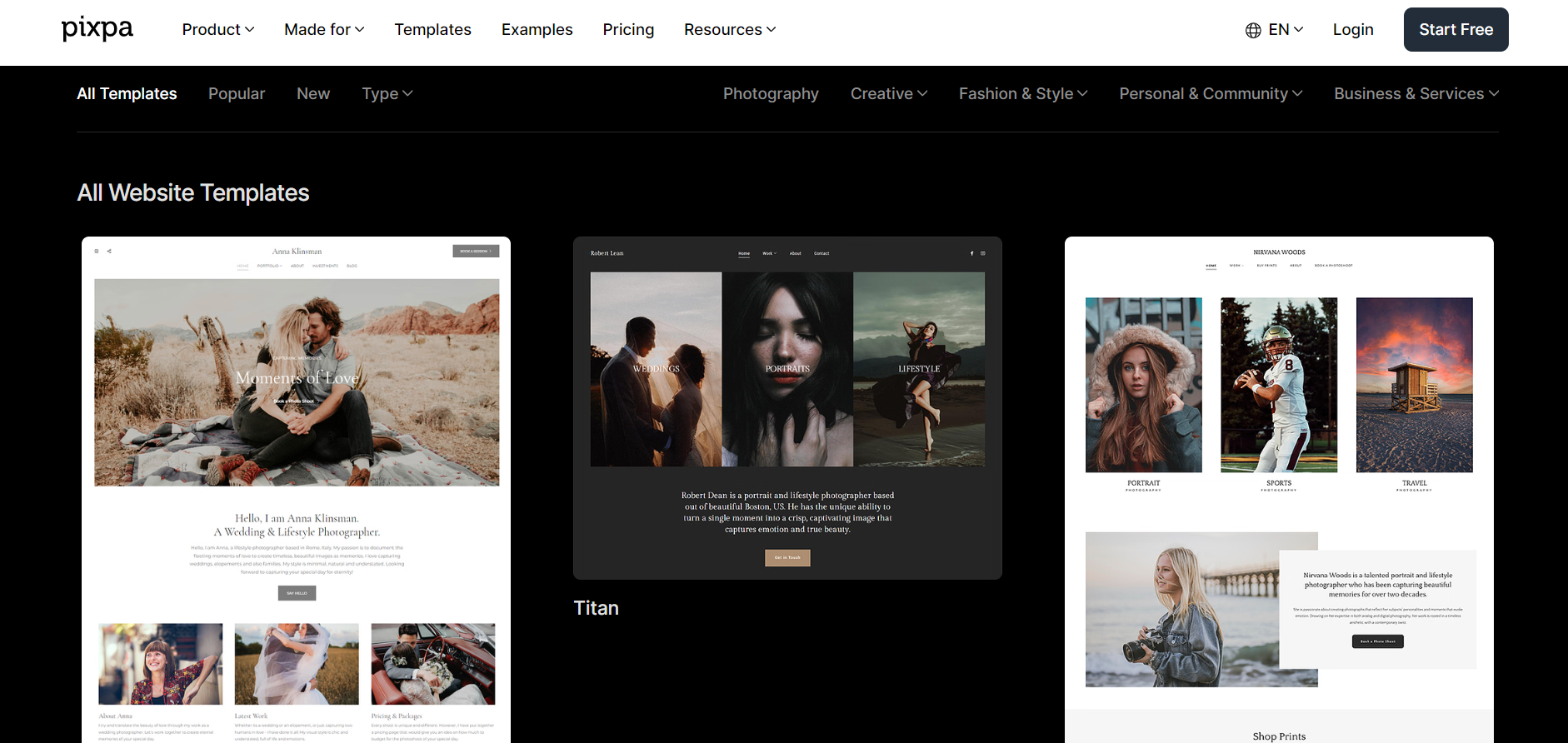
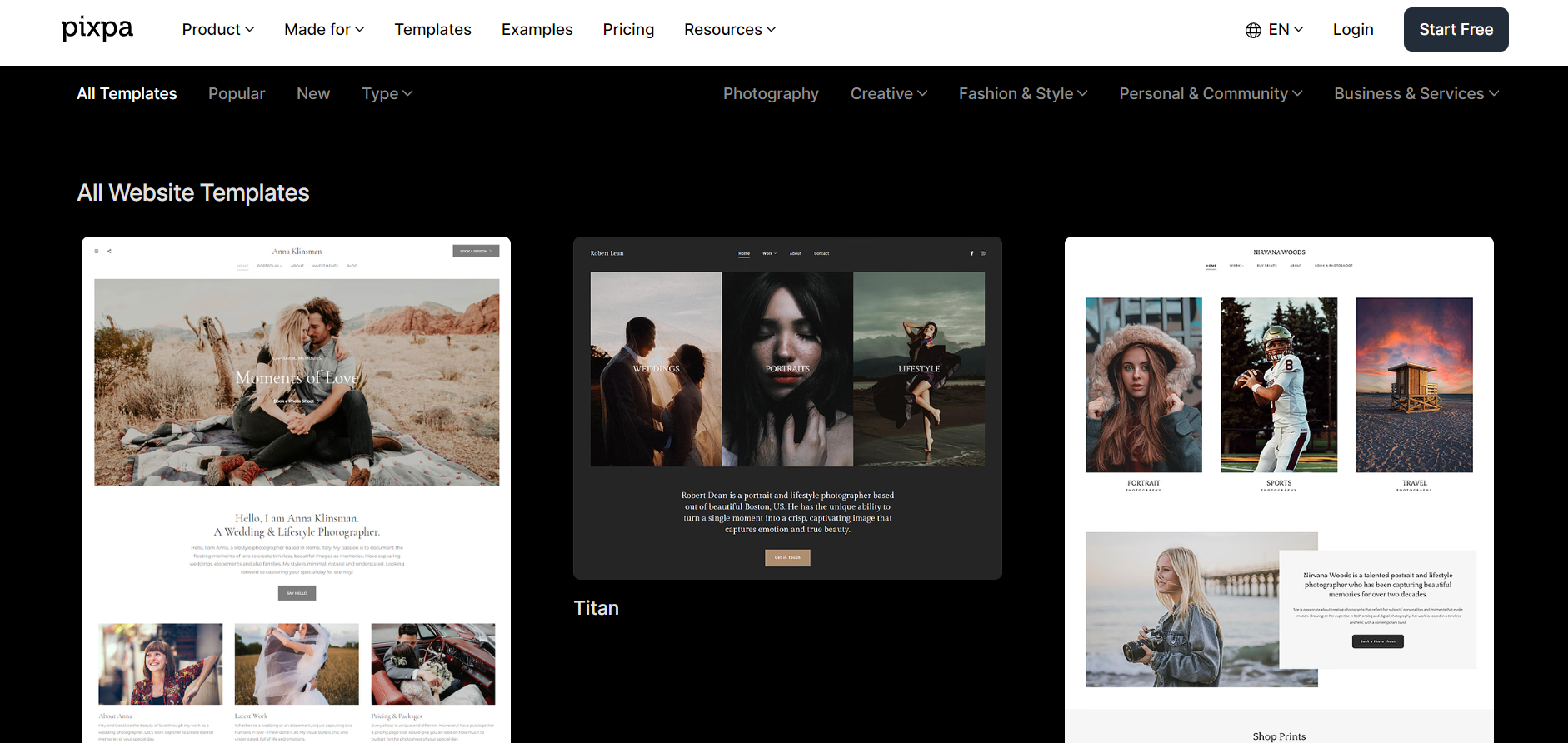
Get a head start on website creation with AI
Create a custom website tailored to your business needs 10X faster with 10Web AI Website Builder!
Ease of use
Ease of useReflects the platform’s overall user-friendliness.Score
Components:
- Learning curve (40%): Quickness and ease of getting started.
- Interface design (30%): Simplicity and intuitiveness of layout.
- User guidance (20%): Quality of tutorials and support.
- Flexibility (10%): Adaptability to various user skills.
 7.5
7.5
 8.4
8.4
🏆 Winner: Pixpa
. With a score of 8.4, Pixpa offers an intuitive and user-friendly interface that allows users, regardless of their technical expertise, to create and manage websites with ease. Webflow, scoring 7.5, is user-friendly for experienced designers and developers but may present a steeper learning curve for beginners.
Learning Resources
🏆 Winner: Webflow
. Both platforms offer comprehensive learning resources, but Webflow stands out with its Webflow University, YouTube Channel, and active community forums, providing a more diverse and interactive learning experience.
For ecommerce
EcommerceMeasures the platform’s effectiveness in supporting online business activities.Score Components:
- Ecommerce themes and templates (20%): Variety and design of templates.
- Product management (25%): Ease of managing and organizing products.
- Payment options (25%): Variety and convenience of payment methods.
- Ecommerce features (20%): Features for managing an ecommerce store.
- Integration (10%): Compatibility with external e-commerce tools and services.
 8.5
8.5
 7.0
7.0
Webflow and Pixpa both offer ecommerce capabilities, but they cater to different needs. Webflow is a robust platform for creating online stores, offering comprehensive ecommerce features such as easy store creation without coding, extensive customization options, product management with variations, inventory tracking, integration with major payment gateways, automated shipping calculations, tax configuration, and marketing tools like abandoned cart recovery and email marketing. On the other hand, Pixpa offers a range of ecommerce features tailored for creatives and small business owners, including an integrated shopping cart, inventory tracking, and the ability to sell both physical and digital products. However, its ecommerce functionalities might be somewhat limited for larger businesses or those with complex inventory needs, as it focuses more on simplicity and ease of use.

|

|
|
|---|---|---|
|
Ecommerce themes and templates |
7.5 |
6.8 |
|
Product page customization |
8.3 |
6.5 |
|
Payment processing and commissions |
7.8 |
7.5 |
|
POS capabilities |
6.5 |
0.0 |
|
Payment gateways |
8.0 |
7.0 |
|
Product numbers |
7.0 |
5.5 |
|
Additional ecommerce features |
7.9 |
6.0 |
Webflow ecommerce features:
- Checkout and Payment Processing with Stripe, PayPal, etc.
- Marketing and Promotions
- Tax and Shipping calculations
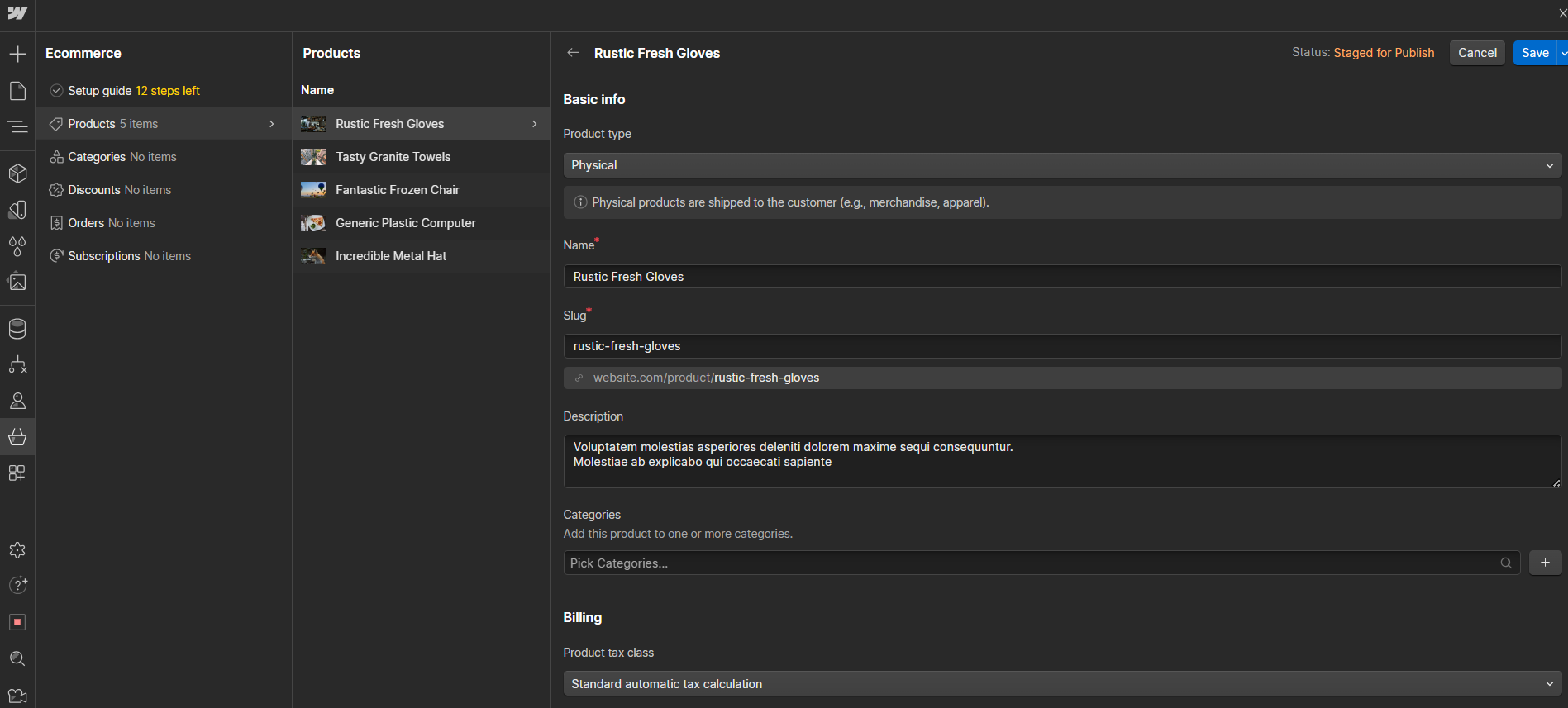
Pixpa ecommerce features:
- SEO and Marketing features
- Secure Payments
- Comprehensive product options
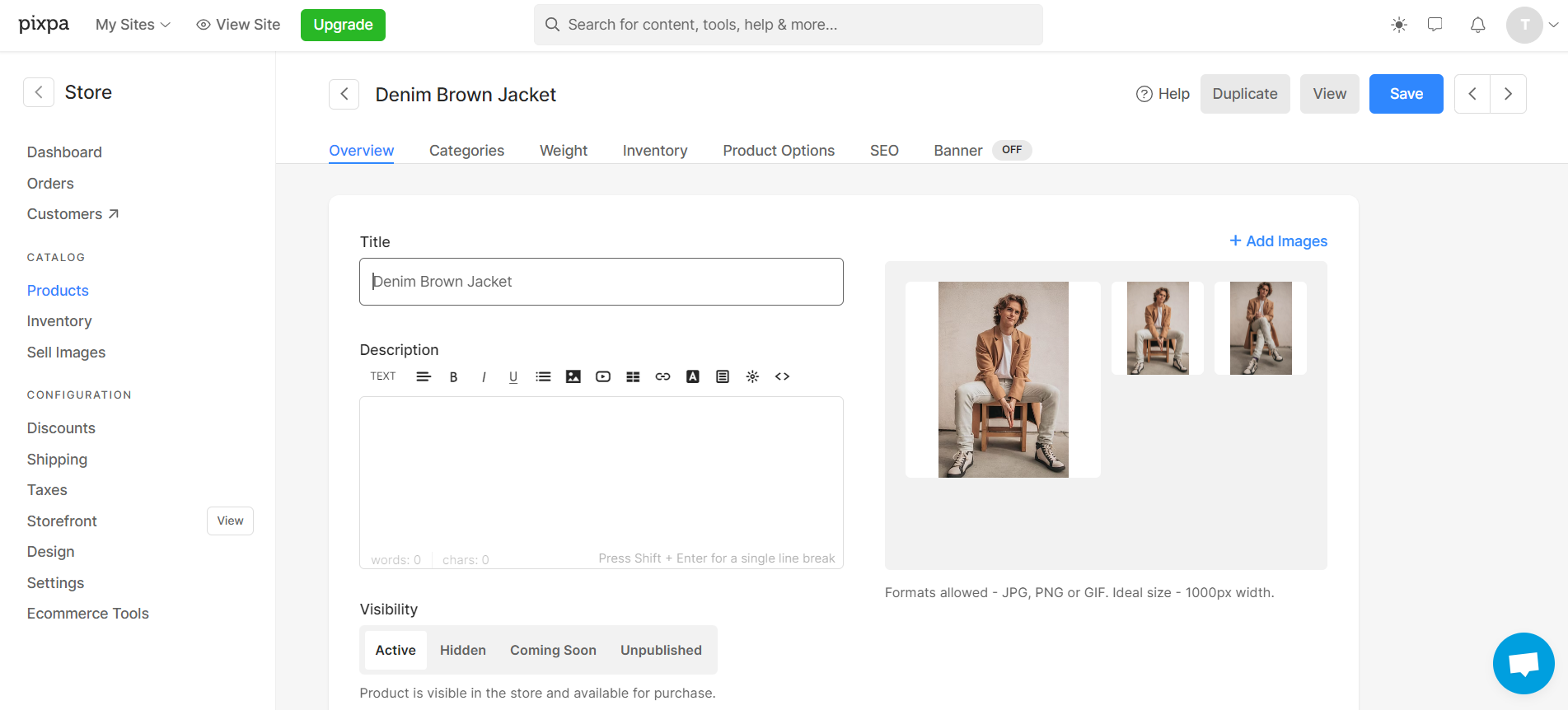
Ecommerce themes & templates
Webflow offers a diverse range of ecommerce themes and templates designed to cater to various types of online stores, from fashion and technology to artisan crafts and children’s products. Each template comes equipped with built-in ecommerce functionality, allowing you to easily add products and manage your store without the need for coding. Pixpa offers a variety of ecommerce-specific templates designed to cater to online stores and businesses. These templates are crafted to showcase products effectively, integrate shopping carts, and provide a seamless checkout experience. However, the customization options might have limitations depending on the chosen plan, and advanced ecommerce features could be restricted to higher-tier plans.
Product page customization
Webflow offers extensive customization options for eCommerce product pages, allowing users to design and personalize their pages without coding. It provides tutorials for creating product pages from scratch, offers responsive templates for various devices, and allows users to add custom code and dynamic content using Webflow’s CMS for maximum customization flexibility. Pixpa offers a range of ecommerce product page customization options to cater to various needs. Users can easily manage and display products with options for multiple images, pricing variations, and detailed product descriptions. The platform allows for the customization of layout and design elements, including colors, fonts, and the overall aesthetic to match the brand identity. Additionally, Pixpa supports the integration of customer reviews, related products, and promotional banners to enhance the shopping experience and increase conversion rates.
Payment processing
Webflow provides a flexible and secure platform for payment processing and ecommerce through integrations with leading payment gateways like Stripe and PayPal. This allows users to accept a wide range of payments, including credit card transactions directly from their websites. Given the versatility of Stripe and PayPal, businesses can manage online sales efficiently, and these integrations likely support various transaction types, potentially including POS transactions for physical sales environments. Pixpa does not charge commissions on sales, allowing creators to keep all revenue generated, minus any transaction fees from payment processors. The platform supports various payment gateways, including Stripe, PayPal, Razorpay, PayUmoney, and offline payments, to facilitate direct payments into user accounts. However, Pixpa does not have any POS capabilities.
Website Editors
Website EditorsEvaluates the platforms’ website building and editing capabilities.Score Components:
- Customization tools (40%): Range and power of editing features.
- Editor usability (30%): User experience within the editor.
- Design flexibility (20%): Freedom in layout and design changes.
- Update and maintenance ease (10%): Simplicity of updating and maintaining the site.
 9.0
9.0
 7.5
7.5
🏆
Winner: Webflow
. With a score of 9.0, Webflow’s website builder editor is praised for its intuitive visual interface that simplifies the process of designing and editing responsive websites without requiring deep technical knowledge. It offers a perfect blend of ease of use for beginners and the flexibility for more advanced users, enabling significant cost savings by allowing users to customize and manage their sites without hiring professionals.
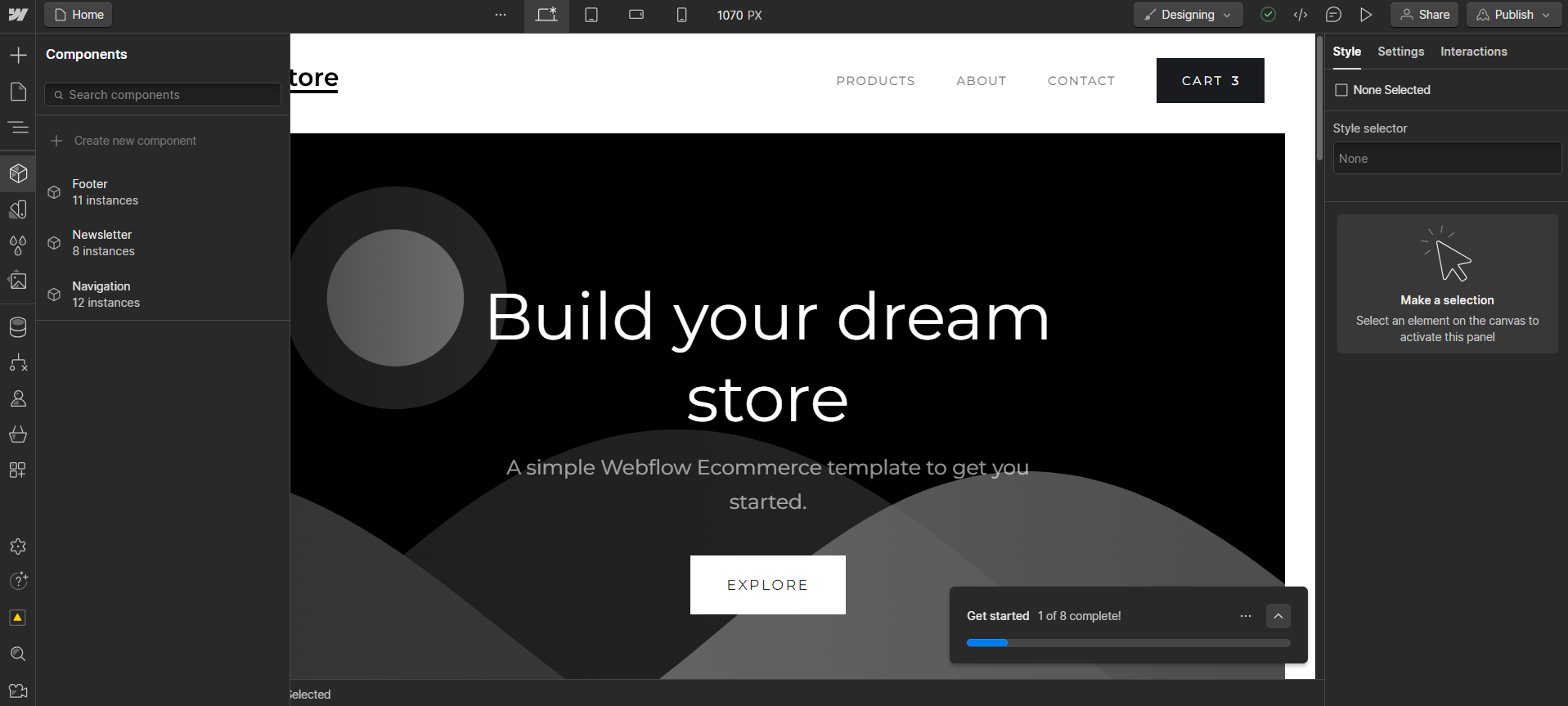
Pixpa, scoring 7.5, is designed with a user-friendly interface that aims to cater to both beginners and professionals in website creation. Its drag-and-drop editor simplifies the process of designing and customizing websites, making it accessible for users with little to no technical background. However, like any platform, beginners might face a learning curve as they familiarize themselves with the various features and tools available.
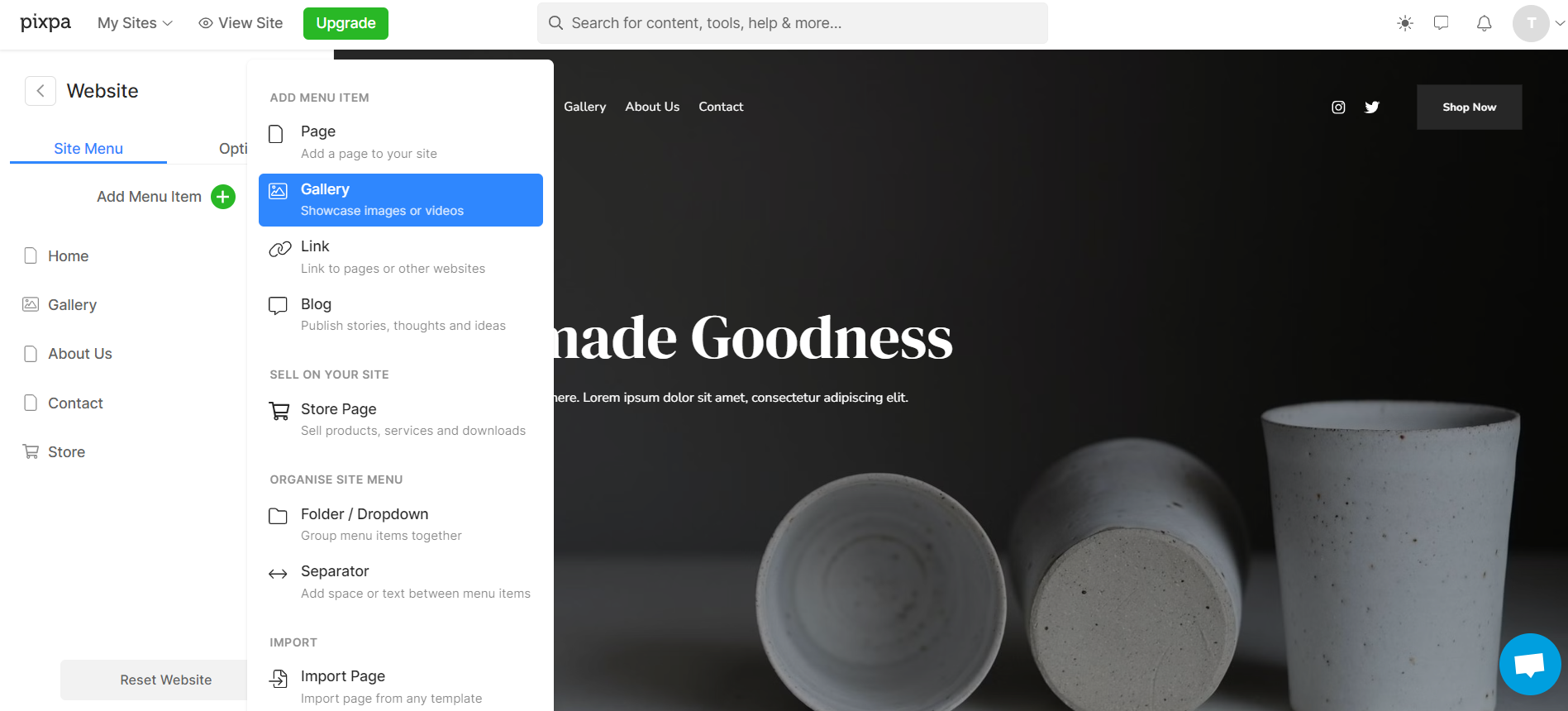
Mobile editor/app
 7.0
7.0
 5.5
5.5
🏆
Winner: Webflow
. Both Webflow and Pixpa do not have a dedicated mobile editor app, but they offer some form of mobile editing. Webflow has a third-party app called EditFlow, created by a community member for Webflow users. Currently, the app is only available for iOS. On the other hand, Pixpa allows editing on a mobile browser, but with some limitations.
Despite these options, the mobile editing experience may not be as smooth or feature-rich as the desktop versions. The scores given for the mobile editor reflect these limitations, with Webflow scoring higher than Pixpa.
In summary, Webflow is the winner in this category.
Product testing options
Product Testing OptionsAssesses the options for trying out platform features before commitment.Score Components:
- Trial quality (40%): Extent and usefulness of the trial or free version.
- Feature accessibility (30%): How many features are available to test.
- Trial duration (20%): Length of the trial period.
- Ease of transition (10%): Smoothness of moving from trial to paid plans.
 6.3
6.3
 8.5
8.5
Overall Result
:
Pixpa Wins
. Pixpa scores 8.5 in product testing options, outperforming Webflow which scores 6.3. Pixpa offers a 15-day free trial during which all premium features can be tested. Additionally, Pixpa provides a 30-day money-back guarantee, offering users a risk-free opportunity to explore the platform. On the other hand, Webflow offers a free plan with basic features but does not provide a trial version or a money-back guarantee.

|

|
|
|---|---|---|
|
Free Plan |
Yes | No |
|
Trial Duration |
No |
15 days |
|
Testing Premium Features |
Basic features with free plan |
All features during 15-day free trial |
|
Money Back Guarantee |
No |
30-day money back guarantee |
Price
PriceLooks at the cost-effectiveness and value for money of each platform.Score Components:
- Plan value (40%): What each pricing tier offers.
- Transparency and clarity (30%): Clearness of pricing structures.
- Flexibility of plans (20%): Range of options to suit different budgets.
- Hidden costs (10%): Additional expenses not included in the plan.
 8.0
8.0
 9.1
9.1
Pixpa offers more affordable plans and a significant discount for annual subscriptions, making it a cost-effective choice for creatives and small businesses. Webflow, on the other hand, provides a wider range of plans, including options for large businesses and enterprises, and is known for its powerful design tools and flexible CMS.

|

|
|
|---|---|---|
|
Free |
Starter (Free): Limited features for new sites, including 2 static pages and 50 form submissions lifetime. |
No offering at this amount. |
|
$0-$10 |
No offering at this amount. |
Basic ($8/month): Ideal for personal use with basic website features, gallery images, and blogging. Possible to have up to 10 website pages and up to 200 images. Value for price: 6.0 |
|
$10-$15 |
No offering at this amount. |
Creator ($15/month): Targets creators with more storage and enhanced visibility options. Value for price: 7.0 |
|
$15-$25 |
Basic ($18/month): Suitable for simple sites with a custom domain, including basic SEO controls and 500 monthly form submissions. And 100 pages. Value for price: 6.5 |
Professional ($20/month): For professionals needing ecommerce enhancements and larger storage. Value for price: 8.0 |
|
$20-$30 |
CMS ($29/month): For content-driven sites with 2,000 CMS items, 1,000 monthly form submissions, and full API access. And 150 website pages. Value for price: 7.5 |
Advanced ($25/month): Best for businesses requiring extensive resources and advanced ecommerce tools. Value for Price: 9.0 |
|
$40-$45 |
Standard ($42/month): For new businesses with up to 500 ecommerce items, includes basic ecommerce features, and 2% transaction fee Value for price: 8.5 |
No offering at this amount. |
|
$45-$50 |
Business ($49/month): High traffic capacity, advanced features like site search, and up to 10 content editors. Value for price: 8.0 |
No offering at this amount. |
|
$80-$90 |
Plus ($84/month): Higher volume businesses with 0% transaction fees, up to 5,000 ecommerce items, and advanced features. Value for price: 9.0 |
No offering at this amount. |
|
$200+ |
Advanced ($235/month): Scalable solution for large online stores with up to 15,000 ecommerce items and the highest caps and 0% transaction fees. Value for price: 9.5 |
No offering at this amount. |
location. As a result in rare cases the prices displayed here can differ from the ones you see on their
websites.
Hosting quality
Hosting
qualityExamines the reliability and performance of the hosting solutions.Score Components:
- Uptime (40%): Consistency and reliability of website availability.
- Speed (30%): Loading times and performance.
- Bandwidth and storage (20%): Sufficiency of resources provided.
- Data centers (10%): Quality and distribution of hosting infrastructure.
 8.9
8.9
 5.4
5.4
Winner: Webflow
. Webflow offers managed hosting with a 99.99% uptime guarantee (on the Enterprise plan), leveraging a globally distributed network of data centers from Amazon Web Services (AWS) and Fastly. Pixpa also provides managed cloud hosting, utilizing Amazon Web Services, but does not provide uptime statistics or an uptime guarantee, and does not disclose information about its data centers. This lack of transparency and guarantee gives Webflow the edge in this category.

|

|
|
|---|---|---|
|
Do they offer hosting? |
Yes, included in all paid plans |
Yes, included in all paid plans |
|
Data Centers: |
Webflow doesn’t actually have its own data centers. Instead, it relies on a globally distributed network of data centers from Amazon Web Services (AWS) and Fastly |
Pixpa doesn’t publicly disclose any information about its data centers |
|
Type of hosting: |
Managed Hosting |
Managed Cloud Hosting |
|
Uptime: |
99.99% |
Pixpa does not provide uptime statistics |
|
Uptime Guarantee: |
Only Enterprise plan, 99.99% |
Pixpa does not have uptime guarantee |
Website Speed Optimization
Website Speed OptimizationEvaluates optimization of website loading timesScore Components:
- PageSpeed Score (30%): Google’s score indicating performance optimization.
- Loading Time (30%): The average time until a website is fully interactive.
- Mobile Optimization (15%): Optimization effectiveness for mobile devices.
- Resource Optimization (15%): Optimizing images, scripts, and other heavy resources.
- CDN Usage (10%): Use of CDN to enhance speed across geolocations.
 8.1
8.1
 3.0
3.0
🏆 Winner: Webflow
Both Webflow and Pixpa prioritize website performance and page speed, but Webflow has a higher website speed optimization score and provides more detailed information about its load times and PageSpeed score ranges.

|

|
|
|---|---|---|
|
Focus |
Custom Cache Settings, Custom Element Lazy Loading, Automatic Minification, Responsive templates, CDN |
Code Minification, CDN, HTML caching, Server Side Rendering, SEO optimization |
|
Performance Tools |
Google Lighthouse, PageSpeed Insights |
Google PageSpeed Insights |
|
Key Strategies |
Custom Cache Settings, Custom Element Lazy Loading, Automatic Minification, Responsive templates, CDN |
Code Minification, CDN, HTML caching, Server Side Rendering, SEO optimization |
|
Load Times |
Below 2 seconds average |
No data available |
|
Page Speed Scores Range |
77.2/100 |
No data available |
|
Core Web Vitals Improvement |
Improving components’ usability, and emphasis on LCP, FID and CLS |
Emphasis on LCP, FID, CLS improvements |
Webflow’s approach to enhancing site speed includes custom cache settings, custom element lazy loading, automatic minification, responsive templates, and a content delivery network (CDN). It has an average load time of below 2 seconds and a PageSpeed score of 77.2/100. Webflow also focuses on improving components’ usability and emphasizes on Largest Contentful Paint (LCP), First Input Delay (FID), and Cumulative Layout Shift (CLS) for Core Web Vital improvements.
Pixpa, on the other hand, does not provide any data on its load times and PageSpeed score ranges. Its strategies for speed optimization include code minification, CDN, HTML caching, server side rendering, and SEO optimization. Pixpa also emphasizes on LCP, FID, and CLS improvements for Core Web Vital improvements.
Get a head start on website creation with AI
Create a custom website tailored to your business needs 10X faster with 10Web AI Website Builder!
Plugins and integrations
Plugins and integrationsMeasures the range and effectiveness of additional plugins and integrations.Score Components:
- Variety of options (40%): Range of available add-ons.
- Integration smoothness (30%): Ease of integrating plugins into the site.
- Quality of plugins (20%): Functionality and reliability of the options.
- Custom integration capabilities (10%): Support for custom or third-party integrations.
 5.5
5.5
 6.7
6.7
🏆 Winner: Pixpa.
Pixpa scores 6.7, offering over 100 plugins to enhance website functionality, including SEO tools, e-commerce solutions, and social media integrations. Some specific plugins or extensions may come with additional costs. Webflow, scoring 5.5, doesn’t have traditional plugins or extensions but offers a built-in library of website elements and functionalities. It also integrates with third-party services and tools. However, Pixpa’s extensive range of plugins gives it the upper hand.
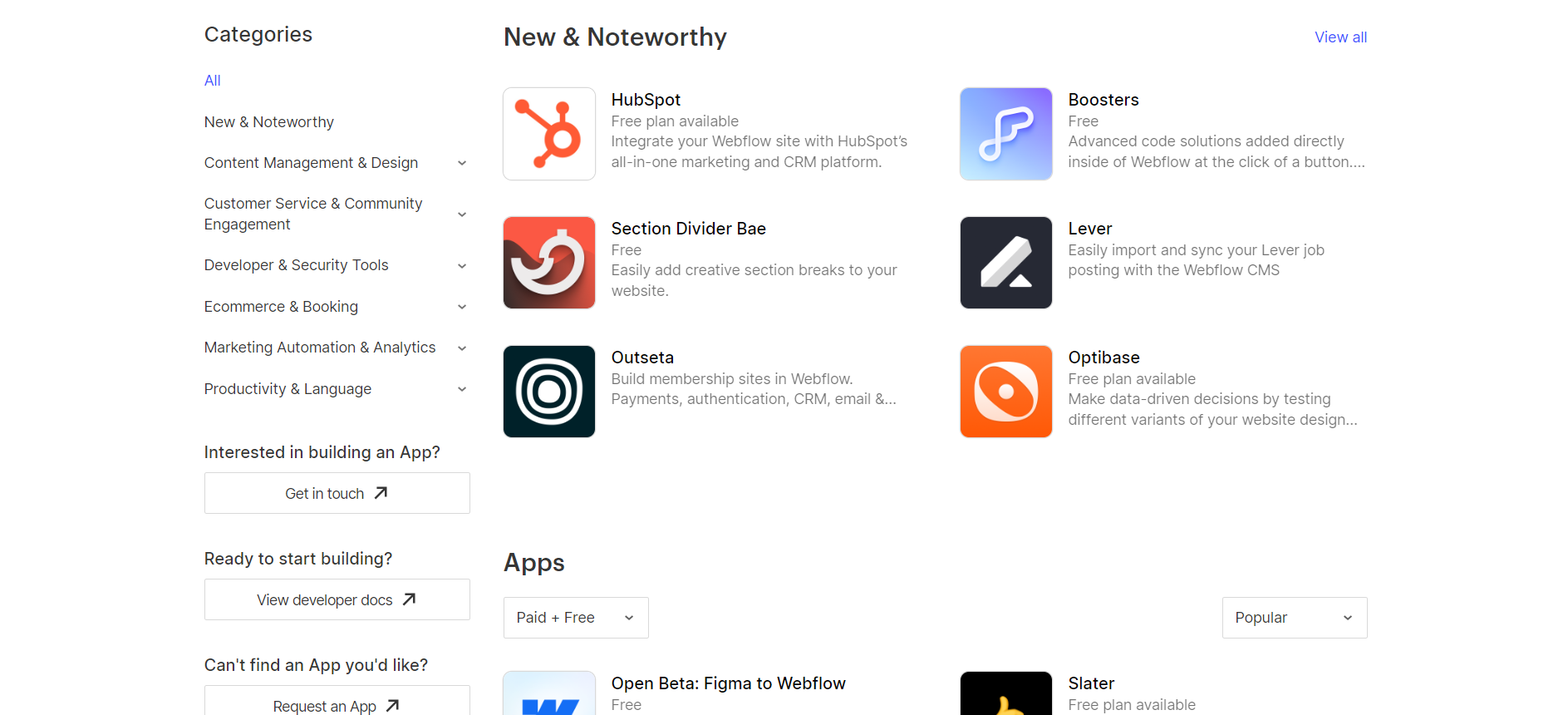
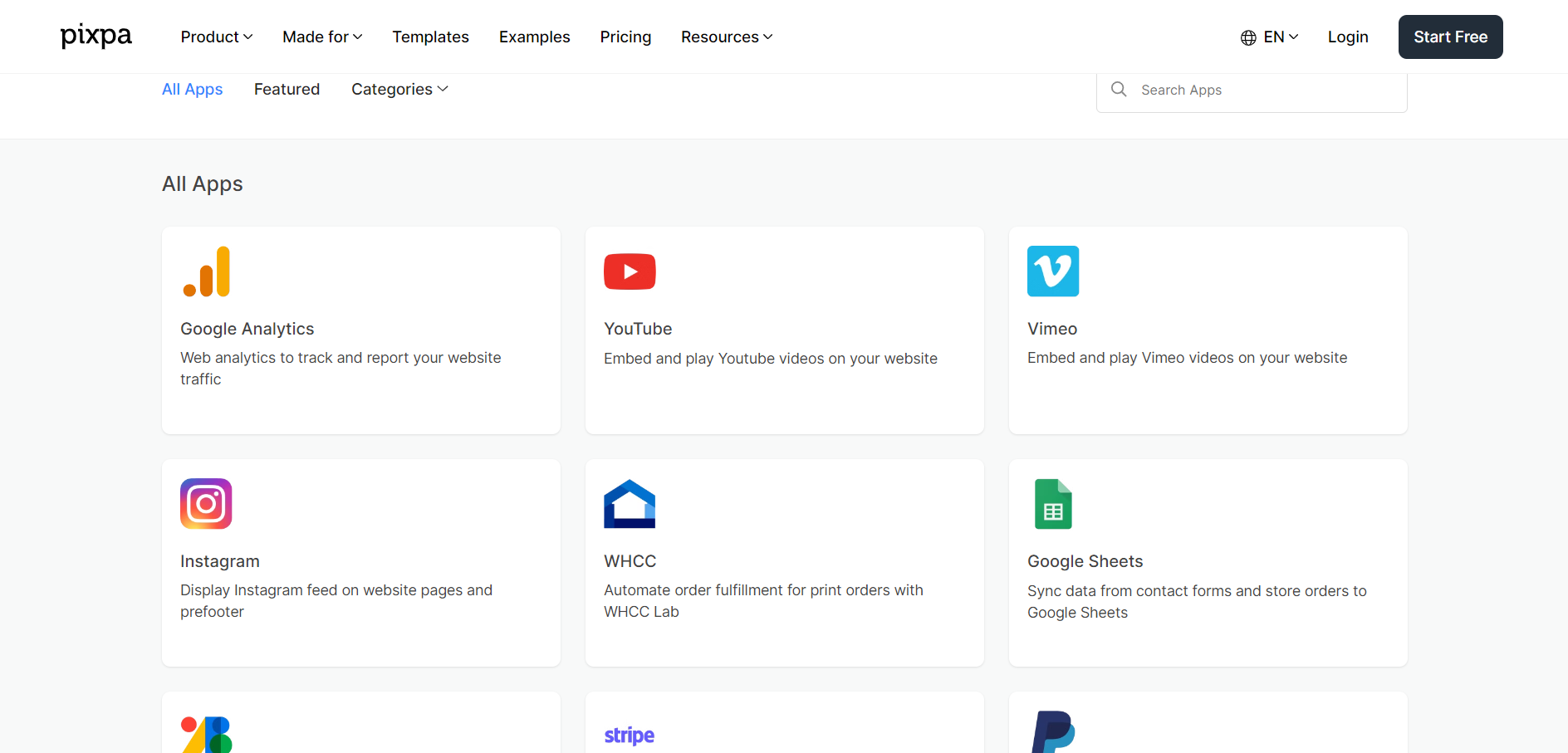
Marketing Features
Marketing featuresAssesses tools and options available for marketing.Score Components:
- SEO tools (40%): Effectiveness of SEO features.
- Marketing automation (30%): Availability and quality of marketing tools.
- Social Media integration (20%): Ease and depth of social media connectivity.
- Email marketing (10%): Quality and usability of email marketing tools.
 7.8
7.8
 7.4
7.4
🏆
Overall Winner: Webflow
. Webflow edges out Pixpa with a slightly higher score, offering robust tools for SEO, email marketing, blogging, social media integration, analytics and reporting, and ads and promotions. Pixpa also offers a comprehensive suite of marketing tools, making it a close competitor.

|

|
|
|---|---|---|
|
SEO Tools |
|
|
|
Email Marketing |
|
|
|
Blogging |
|
|
|
Social Media Integration |
Simplifies content sharing and audience engagement on major social platforms |
Integrated social media buttons and features such as Facebook messenger, Instagram, Whatsapp, etc. |
|
Analytics and Reporting |
Integrates with Google Analytics for comprehensive web traffic and behavior analysis |
Option to integrate Google Analytics for comprehensive analytics |
|
Ads and Promotions |
Supports ad and promotion management through integration with platforms like Google Optimize |
Offers SEO, social media integration, email marketing, and promotional discounts |
Customer Support
Customer supportEvaluates the quality and availability of support options.Score Components:
- Response time (40%): Speed of support responses.
- Support quality (30%): Effectiveness and helpfulness of the support.
- Availability (20%): Range of support channels (phone, chat, email).
- Resource richness (10%): Quality of self-help and educational materials.
 8.3
8.3
 7.0
7.0
🏆 Winner: Webflow
. Webflow takes the lead in this category with a customer support score of 8.3. They offer 24/7 customer support through various channels including live chat, email, and a community forum. Additionally, Webflow provides extensive documentation and video tutorials to help users navigate their platform and troubleshoot common problems. They also offer specialized support for large organizations, featuring a dedicated Customer Success Manager for personalized onboarding, training, and optimization.
Pixpa, with a customer support score of 7.0, provides 24/7 customer support via email or live chat. However, they do not offer enterprise support, which puts them at a disadvantage compared to Webflow.
Security
SecurityLooks at the platforms’ security measures and data protection.Score Components:
- Data protection (40%): Safeguards for user and customer data.
- SSL and encryption (30%): Implementation of secure connections.
- Compliance (20%): Adherence to industry security standards.
- Regular updates (10%): Frequency of security updates and patches.
 7.8
7.8
 8.3
8.3
🏆
Winner: Pixpa
. Pixpa takes the lead in security with a score of 8.3, compared to Webflow’s 7.8. Pixpa’s commitment to data privacy and security is evident in its robust security measures, including SSL encryption, regular backups, stringent privacy policies, and compliance with GDPR and other data protection regulations.
Webflow also prioritizes security, implementing robust encryption techniques, strict access controls, and regular system updates. However, Pixpa’s comprehensive approach to security, including secure hosting with robust firewalls and DDoS protection, gives it an edge over Webflow in this category.
AI Capabilities
AI capabilitiesMeasures the effectiveness of AI-driven features and tools.Score Components:
- Automation efficiency (40%): Impact of AI on streamlining processes.
- Personalization (30%): AI-driven customization for users or customers.
- AI-Assisted design (20%): Role of AI in website design and functionality.
- Data analysis (10%): Use of AI in interpreting user data and analytics.
 8.3
8.3
 0.0
0.0

|

|
|
|---|---|---|
|
AI Builder |
Announced, not yet available |
Not available |
|
AI Ecommerce features |
Not available |
Not available |
|
AI content generation |
Announced, not yet available |
Not available |
|
Additional AI features |
Announced, not yet available |
Not available |
🏆 Winner: Webflow
. Although Webflow’s AI capabilities are not yet available, they have announced plans to introduce AI features that will enhance the website building experience. These include AI-customized templates, AI co-pilot for faster design creation, and AI-powered content management capabilities. On the other hand, Pixpa does not have any AI capabilities.
User Management
User ManagementAssesses the platforms’ capabilities in managing user roles, permissions, and accessibility.Score Components:
- Role Customization (40%): Flexibility in creating and defining user roles and
permissions. - Ease of Management (30%): User interface and tools for managing users.
- Access Control (20%): Effectiveness of access control measures for different user
levels. - Scalability (10%): Ability to manage a growing number of users efficiently.
 8.3
8.3
 7.3
7.3
🏆 Winner: Webflow
. Both Webflow and Pixpa offer user management features, but Webflow’s extensive role-based permissions and collaboration features give it an edge.
- Webflow’s Core, Growth, and Enterprise plans offer unlimited editors, while others limit content editors to 3 or 10 per site. Access levels include Designer for full access and Editor for content editing. Workspace roles like Admin, Designer, and Editor ensure collaboration and security through features like the Site Activity Log and role-based permissions.
- Pixpa offers a Users and Permissions feature allowing multiple users on Professional plans (up to 5 users) and Advanced plans (unlimited). The site owner can grant edit access to sections like General, Store, Client Galleries, Marketing, Settings, and Administration, customizing permissions based on user roles. The site owner can manage user permissions, suspend or reactivate users, and permanently remove them, but irreversible actions should be approached with caution.
Webflow User Roles and Access Levels:
| Role | Description | Access Highlights |
|---|---|---|
| Workspace Owner | Full control over Workspace settings and member management. | Edit settings, manage billing, access/edit all sites, invite/remove members, manage permissions. |
| Workspace Admin | Similar to the owner with some restrictions. | Edit settings, manage billing, access/edit all sites, invite/remove members (except owner), manage permissions. |
| Workspace Member | Limited control focused on site interaction. | Download invoices, access/edit sites, invite members. |
| Workspace Guest | Temporary collaborators with limited access. | Access/edit sites. |
| Workspace Commenter | Limited to commenting for feedback on sites. | Create/view/resolve comments, preview sites. |
| Site Admin | Full control at the site level. | Manage permissions, delete/transfer sites, billing management, design and publish changes. |
| Can Design | Design capabilities with some restrictions on publishing. | Design in Designer, create/modify classes and components, publish changes with permission. |
| Can Design (Limited) | Restricted design capabilities for Enterprise customers. | Create new classes, modify created classes, limited publishing capabilities. |
| Can Edit | Content editing without full design privileges. | Edit text/links/images, manage assets, publish Collection items and Ecommerce products. |
| Can Comment (Site Level) | Commenting for feedback at the site level. | Create/view/resolve comments, preview sites. |
Additional Features

|

|
|
|---|---|---|
|
SSL Certificate |
|
|
|
Custom Domain |
|
|
|
Free Custom Domain Included |
|
|
|
International Domains |
|
|
|
Mobile Responsive |
|
|
|
Page Speed |
|
|
|
Website Builder Mobile App |
|
|
|
Convert a Website To An App |
|
|
|
Website Analytics |
|
|
|
Multilingual Sites |
|
|
|
Multiple Users |
|
|
User Feedback
Webflow is highly regarded for its user-friendly interface that eliminates the need for coding while offering extensive design flexibility. Users appreciate its scalability, cost-effectiveness, and seamless integration of essential features like forms and CMS. However, some users note a slight learning curve and occasional limitations, particularly in ecommerce functionalities and content management. Overall, Webflow proves to be a powerful tool for building and managing websites, offering robust features for both beginners and experienced developers, albeit with some room for improvement in certain areas like collaborative editing and content management.
Pixpa, on the other hand, stands out for its exceptional customer service, easy-to-use interface, and affordable pricing. Users appreciate the variety of templates and customization options available, allowing them to create professional-looking websites tailored to their needs. The responsive and helpful customer support, coupled with the platform’s features like online forms and integrations, make Pixpa a valuable tool for individuals and businesses seeking to establish a strong online presence. Despite some minor issues like limited options for third-party integrations and mobile layout adjustments, Pixpa remains highly recommended for its versatility, professionalism, and overall value.
The making of this blog
We followed a clear, step-by-step process to write and research this article.
FAQ
Which platform is better for professional designers, Webflow or Pixpa?
Can I use Pixpa for my ecommerce business?
Is Webflow easy to use for beginners?
How do Webflow and Pixpa compare in terms of pricing?
Which platform offers better customer support, Webflow or Pixpa?
Are there any AI capabilities available in Webflow or Pixpa?










